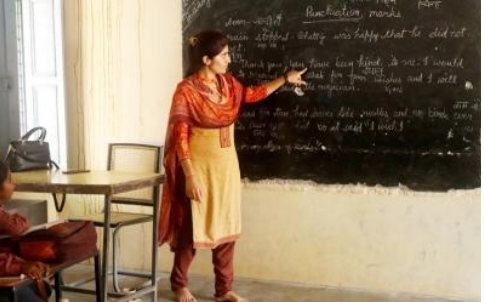The new education policy of 2020 which is yet to come into full swing puts emphasis on mother tongue as medium of instruction up to V grade and if possible up till XIII grade. There is lot of wisdom in suggesting regional or local language as an alternative of mother tongue if mother tongue is practised by limited population in limited areas. There is ample evidence from around the world that a national educational policy which accords mother tongue as educational medium improves learning process. The 2011 census mentions existence of 270 mother tongues in India among which, according to a study, 47 languages are used as mediums of instruction in the schools. There are undoubtedly several advantages if mother tongue is adopted as medium of learning. However, our education policy does not impose any restriction to use only one language as medium of instruction. Several countries in the world flourished with their own language serving as medium for learning and innovation. But all of them, unlike in India, are geared up to meet modern science and technology requirements.
Also read: Buckling down community healthcare with CHMs and MHLPs
English is much preferred language
India with long years of serfdom under British and the active prorogation of English by the rulers English language survived as the most preferred medium of learning for children by the parents and politicians. The trend continued even after independence. Of late some state governments announced their policy, preferring English medium while other had divergent road maps. Andhra Pradesh High Court recently annulled Jagan government’s order changing all Telugu Medium schools to English medium.
Early schooling in mother tongue is not a new phenomenon. The Indian constitution (article 350A ), Kottari Commission in late sixties and the right to education Act 2009 all insist on using mother tongue as medium of learning. It is faster and clear for the minds of children to comprehend and learn. However, there are arguments in favour of English language as medium even in the early stages of ones’ education. The ‘English only’ policy in class rooms if implemented strictly it may have advantages like developing expression capacity of pupil in English, growth of problem solving skills, and making socialising easier. Further, it is easy to manage the divergence that exists. The disadvantages, on the other hand, are paucity of trained teachers who can speak fluently and teach flawlessly in English. It hampers the educational process and even demotivates students with lower English language compatibility and skills.
Also read: OBESITY AMONG WOMEN IN INDIA AND JUNK FOOD
State govts addressed the problem well
This problem of medium of learning and teaching was well addressed by state government in different ways. Maharashtra adopted a policy in many governments aided schools a norm called ‘semi English’ after 2005, which was adopted by semi- English government schools run by some trusts in urban areas. This norm now is spread in all rural schools checking to an extent the dropouts form government schools. In United Andhra Pradesh also the bilingual, cultural process is accepted all around, though the pedagogy remained traditional like in Maharashtra.
In Madhya Pradesh the situations was different. Very few English medium schools were under private management and they practised a policy of strict teaching in English prohibiting Hindi language even for speaking or interacting in the classrooms. Thus English as an ‘aspirational language’ was limited to very few set of people in the private schools catering to the elite. Understanding and making the meaning, that would have been natural to the students in their mother tongue was denied. Thus, they differed from Maharashtra and Andhra Pradesh where the reach was very wide and covered a large section of student population.
Also read: Petrol : Price, Policy & Politics
Students at tender age can learn 4 languages
But all these schools tend to become either English banning schools or mother tongue banning schools preferring Hindi or the regional dominant language as medium of teaching. Present day Andhra Pradesh is one such example of some government schools, tending to become “Full English” medium schools. They are backed by the ideas picked up from the old debate, insisting on the monolingual focus. Whereas, there are other views, suggesting multilingual approach as the best for Indian conditions. This approach consciously encourages transition to English in a credible manner at the same time enriching the regional languages. Thus the multilingual approach is the best form for learning process than strict ‘English Only’ approach. Enrichment of languages and mental faculties of the pupil are only possible if multilingual approach is adopted. The three language formula or the encouragement of even four languages namely mother tongue, regional language, national language and English in the early educational phases of the pupil in Indian context is the best option.After all, during tender age the student can learn languages faster.
However, in this context of conflicting views, prudent action by state governments is needed to move awards a viable plan for government schools. A ‘middle-path way’ appears to be the best alternative, shunning rigid options in school education.
Also read: Climate Smart Agriculture and Need for Appropriate Innovation System




